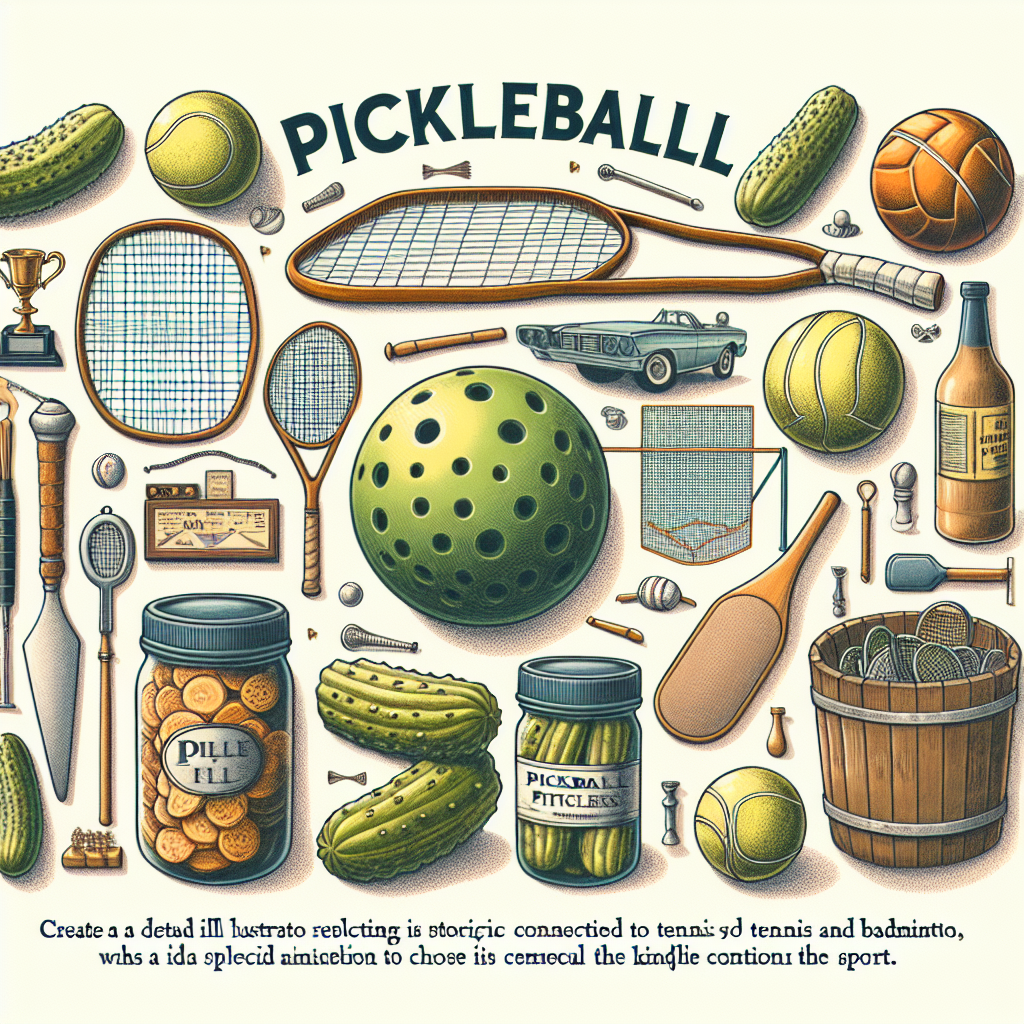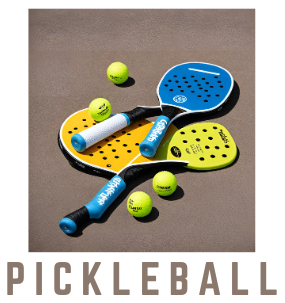Have you ever wondered why the small area in the front of the pickleball court is called “the kitchen”? Well, it turns out, there’s an interesting backstory behind this peculiar name. In this article, we’ll explore the origins of the term and uncover the reasons behind its adoption in the game of pickleball. So, grab your paddle and get ready to uncover the mystery of why it’s called the kitchen in pickleball!

The Origins of Pickleball
Invention and Early Adaptation
Pickleball, a beloved sport known for its mix of tennis, badminton, and table tennis elements, had humble beginnings. It was invented on Bainbridge Island in Washington State in the mid-1960s by three friends: Joel Pritchard, Bill Bell, and Barney McCallum. The trio was determined to create a game that could entertain their families during the lazy summer days. Using table tennis paddles, a perforated plastic ball, and a lowered badminton net, they developed the foundation of the sport we know today.
Naming the Sport
When it came time to name their creation, the three inventors faced a common challenge—choosing a suitable and appealing name. According to popular belief, the sport was named after Pritchard’s dog, Pickles, who would frequently chase after the stray balls. However, Barney McCallum, one of the inventors, debunked the myth, stating that the name was derived randomly and had no connection to the dog. Despite the confusion surrounding its name, Pickleball quickly gained popularity, spreading across the United States and eventually finding its way to other parts of the world.
Understanding the Kitchen in Pickleball
Definition and Purpose
The “kitchen” is a term that holds a special place in the world of pickleball. Also known as the non-volley zone, the kitchen refers to the seven-foot area closest to the net on each side of the court. This designated zone plays a crucial role in the game, imposing specific rules and limitations to ensure fair and strategic gameplay. The primary purpose of the kitchen is to prevent players from executing volleys (hitting the ball in mid-air) while positioned within this zone.
Historical Context
The inclusion of the kitchen in pickleball stems from its predecessors, namely tennis and badminton. In tennis, a similar rule called “no volley zone” is in place, preventing players from executing volleys near the net. Badminton, on the other hand, introduced the concept of a “court barrier,” which prohibited players from hitting the shuttlecock too close to the net. These influences from other racket sports not only shaped the game of pickleball but also emphasized the importance of the kitchen in maintaining a fair and strategic playing field.
Comparison to Other Sports
While the kitchen may appear similar to the service boxes in tennis or the front court in badminton, it holds distinct characteristics that set it apart from these sports. In pickleball, players are not allowed to volley the ball while positioned in the kitchen, regardless of whether they are serving or returning the ball. This rule eliminates the possibility of overpowering the opponent by smashing the ball close to the net, forcing players to rely on precise groundstrokes and effective shot placement. It adds an element of finesse and strategy to the game, creating a unique experience for pickleball enthusiasts.
Possible Explanations for the Name
Reference to the Original Rules
Although some may believe that the kitchen’s name is derived from the condiment’s association with preserving or avoiding spoiling the game, there is little evidence to support this claim. Instead, a more plausible explanation suggests that the kitchen is named after the term “kitchen rules,” which were common in a variety of backyard games during the 1960s. These rules often imposed restrictions and limitations in specific areas of play, similar to the kitchen in pickleball. The term “kitchen” stuck, uniquely characterizing this no-volley zone in the sport.
Influence from Other Racquet Sports
Another theory proposes that the name “kitchen” in pickleball could have been borrowed from its predecessor, badminton. In badminton, the kitchen, also known as the “non-volley zone,” is an area near the net where players are restricted from making volleys. Given the cross-pollination of ideas between badminton and pickleball, it is plausible that the kitchen’s name was inspired by its equivalent in badminton. This notion further supports the notion that the kitchen in pickleball has roots in other racket sports.
Familiarity of Kitchen Terminology
Lastly, the explanation for calling the no-volley zone “kitchen” may stem from the familiarity of the term in everyday life. The word “kitchen” is a universally recognizable term that conjures up images of gathering, preparation, and boundaries. By naming the non-volley zone “kitchen,” the inventors of pickleball may have aimed to create a sense of familiarity and comfort while also emphasizing the importance of order and limits within the game.
Exploring Alternative Names
Existing Alternative Terms
While “kitchen” has become the widely accepted term for the non-volley zone in pickleball, there have been some suggestions for alternative names over the years. Some players have proposed calling it the “no-volley zone” or the “non-volley area” to provide a clearer description of the intended purpose. However, these alternatives have struggled to gain traction, as “kitchen” has become ingrained in the pickleball lexicon and carries a sense of tradition and familiarity among players.
Potential Renaming Considerations
Renaming the kitchen in pickleball is not an easy task given its deep-rooted history and embrace within the pickleball community. The use of a new term could potentially cause confusion and resistance among players. However, if a renaming were to be considered, it would be essential to choose a name that accurately reflects the function and purpose of the area. Any new term must maintain the spirit of the game while being easily understandable and universally relatable to both new and experienced players.

The Kitchen’s Impact on Gameplay
Strategic Placement and Limitations
The kitchen’s unique placement near the net has a significant impact on the way the game is played. It adds a layer of strategy as players must position themselves strategically to avoid entering the non-volley zone while still maintaining a strong position on the court. The limitations imposed by the kitchen force players to be more deliberate and careful when making shots, adding a dynamic element to the game and enhancing the overall strategy.
Defensive Advantage
The kitchen in pickleball also provides a defensive advantage to players who are skillful in utilizing the area. Skilled players who can effectively defend and counter their opponents’ shots from the kitchen can gain an upper hand. These players have the advantage of being closer to the net and can quickly react to aggressive shots, effectively slowing down the pace of the game and frustrating their opponents.
Common Mistakes and Pitfalls
While the kitchen offers strategic advantages, it is also a source of common mistakes and pitfalls for both experienced and novice players. One of the most common errors is “foot faulting” – stepping into the kitchen while striking the ball, resulting in a fault. Additionally, players may occasionally find themselves overly cautious when approaching the kitchen, leading to missed opportunities and less aggressive play. Mastering the art of navigating the kitchen area is an ongoing challenge for pickleball players at all levels.
Evolution of the Kitchen Rule
Past Modifications
Over the years, the kitchen rule has undergone some modifications to foster fair and balanced gameplay. Initially, players were not allowed to volley the ball from the kitchen at any time. However, this strict rule was later relaxed, and players were permitted to volley the ball once it has bounced outside of the kitchen boundaries. These adaptations aimed to provide players with more opportunities for creative shots, while still maintaining the essence of the kitchen as a non-volley zone.
Controversies and Debates
As with any sport, controversies and debates have surrounded the kitchen rule in pickleball. Some players argue for a complete elimination of the kitchen, claiming that it limits aggressive play and restricts the sport’s potential. On the other hand, proponents of the kitchen rule emphasize the importance of maintaining a balance between offense and defense, as well as preserving the unique identity and strategic nature of the game.
Current Standard and Future Changes
As of now, the traditional kitchen rule remains an integral part of pickleball and is accepted as the standard for most tournaments and matches. However, the sport continues to evolve, and potential changes may be considered in the future. The pickleball community, along with governing bodies and organizations, constantly evaluate the rules and regulations to ensure a fair and enjoyable experience for players. Any future modifications to the kitchen rule will likely be carefully considered to maintain the spirit of the game while addressing players’ concerns.

Various Interpretations and Practices
Different Tournament Approaches
The interpretation and enforcement of the kitchen rule may vary slightly between different pickleball tournaments. While the core concept of the non-volley zone remains the same, the specific rules regarding foot faults, volleys, and even the dimensions of the kitchen may differ slightly. Tournament organizers often deliberate and fine-tune the rules to strike a balance between fostering competitive play and maintaining the integrity of the kitchen’s purpose.
Adaptations for Casual Play
In casual or recreational play, the kitchen rule can also be adapted to accommodate players’ skill levels and preferences. Friends and groups of players may modify the rule to allow a more lenient interpretation, especially for beginners who are still mastering their skills. This flexibility in application highlights the inclusive nature of pickleball and allows players of all abilities to find enjoyment in the game, regardless of their familiarity with the kitchen rule.
Community Opinions and Adaptation
Players’ Perception and Acceptance
The pickleball community as a whole has embraced the concept of the kitchen, recognizing its significance in shaping the sport’s unique character. While individual players may have their preferences and viewpoints on the rule’s implementation, there is a general acceptance and understanding of the kitchen’s role in pickleball. The community’s willingness to adapt and respect the rule contributes to the sport’s vibrant and inclusive culture.
Culture and Tradition
Beyond its impact on gameplay, the kitchen has become a symbol of the pickleball community’s culture and tradition. The term “kitchen” is recognized and understood by pickleball players worldwide, often invoking a sense of camaraderie and shared experiences. As players gather on the courts, the presence of the kitchen serves as a constant reminder of the sport’s history, heritage, and commitment to fair play.
Other Aspects Influenced by the Kitchen
The presence and significance of the kitchen in pickleball extend beyond gameplay itself. It has influenced the design and construction of pickleball courts, with specific attention given to the dimensions and coloring of the kitchen area. Furthermore, the kitchen’s impact can be felt in the way strategy and tactics are devised, as players consider how to maximize its advantages or exploit opponents’ vulnerabilities. The kitchen’s influence on the sport reaches far beyond its immediate boundaries.

Iconic Moments and Stories Involving the Kitchen
Memorable Matches
Throughout pickleball’s history, there have been numerous memorable matches that showcase the importance of the kitchen in gameplay. Whether it is a well-executed strategic maneuver from the kitchen or the decisive utilization of the no-volley zone, these moments remind us of the vital role the kitchen plays in shaping the outcome of matches and establishing legends in the sport.
Strategic Innovations
Innovative players have continuously pushed the boundaries of what is possible within the kitchen, discovering new ways to control the game and surprise their opponents. The kitchen has inspired clever strategies and tactics, leading to the development of more creative shots and game plans. The relentless pursuit of finding new ways to optimize the kitchen’s advantages has propelled the sport forward and added excitement to the pickleball community.
Controversial Instances
As with any rule in sports, there have been controversial instances surrounding the kitchen in pickleball. Players may find themselves in dispute over the interpretation and application of the rule, often leading to heated debates both on and off the court. These controversies serve as catalysts for further examination and potential rule modifications, reflecting the continual evolution of the kitchen rule and its impact on gameplay.
Conclusion
The kitchen holds a special place in the world of pickleball, representing heritage, strategy, and tradition. Originating from the sport’s early days, it has become an integral part of gameplay, challenging players to navigate its boundaries and find harmony between aggression and finesse. The kitchen’s impact extends beyond the pickleball court, shaping the culture, discussions, and strategic innovations within the sport. While debates and controversies may surround its existence, the kitchen remains a core feature that defines pickleball and maintains the essence of fair and enjoyable play.


